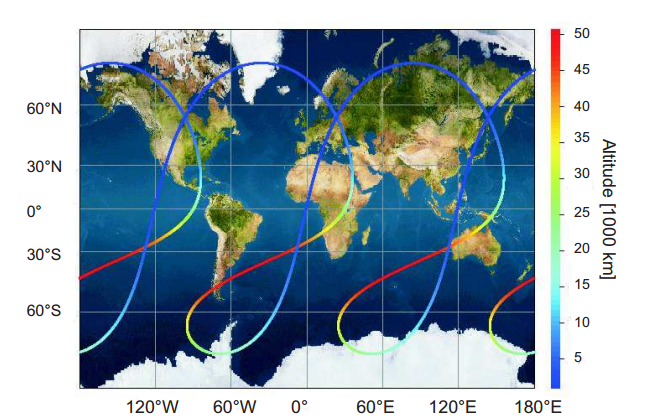How To Tackle the Outstanding Problem in Astrophysics
Last year, physicists solved one of the great problems in modern space science–the Pioneer anomaly. This leaves them free concentrate on another myserious phenomenon associated with spacecraft trajectory.

Space scientists first become aware of it in 1990 when NASA’s Galileo spacecraft swung past Earth en route to a gravitational slingshot towards Jupiter.
As they examiend the data afterwards they discovered that the spacecraft’s speed suddenly jumped by 4 mm per second during the flyby.
The change attracted little attention at the time. But when a similar thing happened during flybys of the NEAR, Cassini and Rosetta spacecraft, astrophysicists began to sit up and take notice.
Nobody knows what could cause a sudden step change in momentum. But the prospect that this may be new physics has attracted an increasingly interested group of astrophyscists. We’ve looked at various explanations on this blog here, here and here.
Studying the flyby anomaly is hard. Earth flybys are rare and there is little useful data from past events. Other than with Cassini, no space agency has actually tracked a spacecraft in detail as it passes the point of closest approach to the Earth.
The anomaly comes about when space scientists are unable to find a single hyperbolic arc that matches the spacecraft’s trajectory. Instead, they end up fitting two distinct arcs—an incoming and outgoing arc–and assume the difference is the result of some anomalous change in velocity.
More detail may emerge in October next year when the Juno mission is due to fly past Earth en route to Jupiter. But physicist will want even better data and preferably a steady stream of it to get to grips with something that is statistically significant.
Last year, we looked at a proposal to use spacecraft capable of receiving signals from the next generation of global navigation satellite systems, which should provide the kind of spatial resolution data that can accurately measure the anomaly.
That’s an interesting idea but in the absence of an actual mission with the required trajectory to measure the effect, it is little more than a pipe dream.
Today, Jorge Paramos at the Technical University of Lisbon and Gerald Hechenblaikner, at the satellite builder Astrium, point out that just such a mission is now being planned.
The European Space Agency is currently considering a mission for launch in 2022 or 2024 called the Space-Time Explorer and Quantum Equivalence Principle Space Test or STE-QUEST.
This is a mission to test various questiosn about gravity, such as equivalence principle which holds that inertial mass is the same as gravitational mass. Or, in other words, that the mass in F=ma is the same stuff as the mass in F = Gm1m2/r^2. The mission will also seek to measure gravitational red shift.
To test this, the mission will measure the way atoms fall in a gravitational field while passing repeatedly along a highly eccentric orbit around Earth.
The spacecraft’s position will have to be precisely measured as it moves and for this reason it will carry global navigation satellite system receivers as well as corner cube reflectors for laser ranging.
Paramos and Hechenblaikner point out that the highly eccentric orbit reproduces the same velocities and altitudes at which the flyby anomaly has been reported in the past. And the ability to precisely measure position is exactly what’s needed to measure it in detail on this mission.
“We demonstrate that the flyby anomaly…could be probed by accurate orbital tracking available in the proposed Space-Time Explorer and Quantum Equivalence Principle Space Test,” they say.
That would be interesting. All that’s needed now is a firm commitment from the European Space Agency to build and launch this thing.
A conclusive observation of the anomaly during the Juno flyby next year might turn out to be an important deciding factor.
Ref: http://arxiv.org/abs/1210.7333: Probing The Flyby Anomaly With The Future STE-QUEST Mission
Keep Reading
Most Popular
Large language models can do jaw-dropping things. But nobody knows exactly why.
And that's a problem. Figuring it out is one of the biggest scientific puzzles of our time and a crucial step towards controlling more powerful future models.
The problem with plug-in hybrids? Their drivers.
Plug-in hybrids are often sold as a transition to EVs, but new data from Europe shows we’re still underestimating the emissions they produce.
How scientists traced a mysterious covid case back to six toilets
When wastewater surveillance turns into a hunt for a single infected individual, the ethics get tricky.
Google DeepMind’s new generative model makes Super Mario–like games from scratch
Genie learns how to control games by watching hours and hours of video. It could help train next-gen robots too.
Stay connected
Get the latest updates from
MIT Technology Review
Discover special offers, top stories, upcoming events, and more.